Choosing the Right Mobile Yard Ramp for Your Business
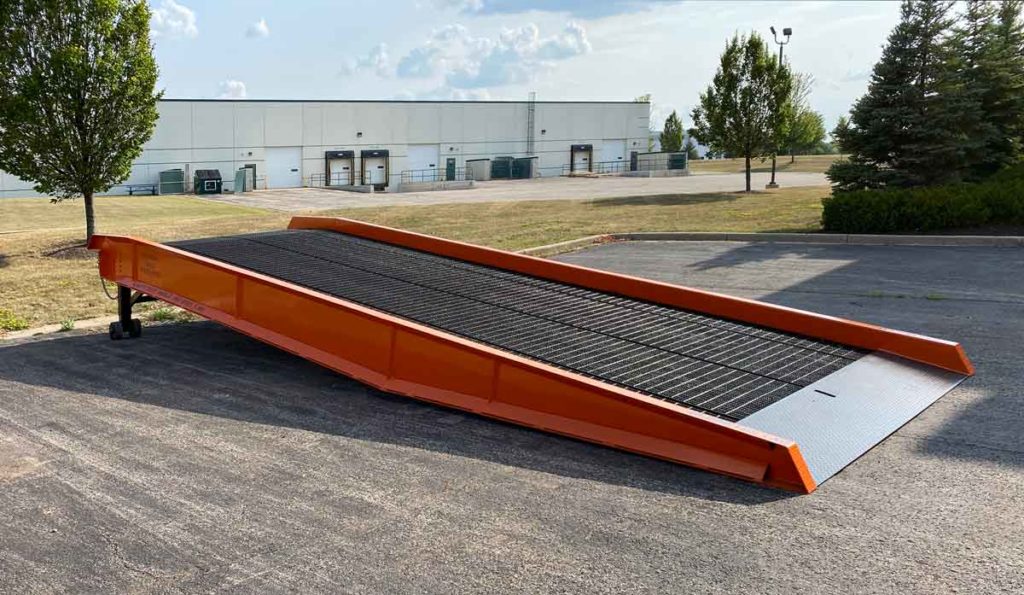
What is a Mobile Yard Ramp?
A mobile yard ramp is used in the absence of a permanent dock ramp. It can be moved anywhere in a shipping and receiving yard to give forklift access to a shipping container or semi-trailer at a loading dock level. One of the main uses of a mobile yard ramp is driving vehicles up and down the ramp to gain access to a building that does not have a drive-in door or to load a vehicle into a truck for transportation.
Mobile Yard Ramps vs. Fixed Yard Ramps
While an impermanent structure may seem inferior to a permanent one, there are a variety of advantages of a mobile yard ramp. Firstly, a mobile yard ramp creates a loading facility where no dock exists without requiring new construction. When not in use, the mobile yard ramp can simply be moved and stored out of the way. This is especially helpful for businesses that handle jobs at multiple locations.
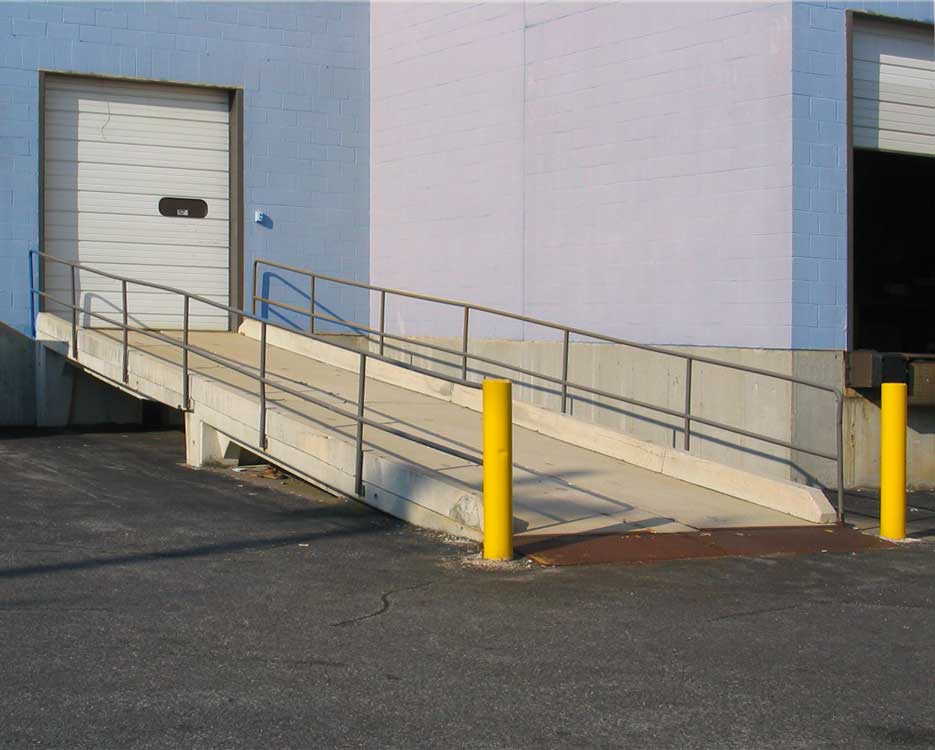
It also allows the mobile yard ramp to move with the business as it grows and possibly relocates, giving the business more flexibility. Most mobile yard ramps also have a better non-slip surface compared to the permanent yard ramps that are usually constructed of concrete, making most mobile yard ramps safer for use in inclement weather.
While the prime advantage of a mobile yard ramp is its movability, its mobility may be a disadvantage to some businesses that would prefer a yard ramp that does not need to be moved frequently. Another disadvantage of a mobile yard ramp is that there are more components that need to be maintained like the wheels or the lift system. However, if used properly, the components of the mobile yard ramp should last many years.
What Features Should a Mobile Yard Ramp Have?
Steel Construction With a Non-Slip Surface
Although portable, a good mobile yard ramp should still be exceptionally robust. Most ramps are constructed of hard-wearing steel components for added durability. Your mobile yard ramp should also have a non-slip surface to avoid dangerous slip and fall injuries. This non-slip surface is especially crucial because the yard ramp will be exposed to environmental conditions outdoors, and needs to provide traction in rain, sleet, or other inclement weather. Most yard ramps feature a grated surface so that water and debris will fall through the surface instead of collecting on the ramp. The grated surface also creates traction with the wheels of vehicles as well as the work boots employees are wearing.
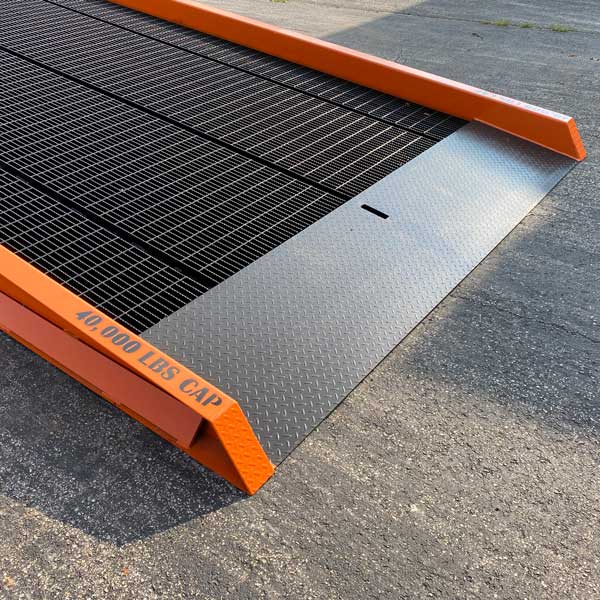
Safety Measures
In addition to the non-slip surface, a mobile yard ramp should also have other components in place for proper usage. Steel safety chains are utilized to secure the yard ramp to the dock or semi-trailer, preventing the ramp from drifting or moving when in use. Safety side curbs should also be in place on either side of the ramp to ensure that forklifts and other vehicles will not roll over the sides of the ramp.
Manual Cranks vs. Hydraulic Lift Systems
Mobile yard ramps are affixed with either a manual crank or a hydraulic lift system to raise or lower the yard ramp when in use. While the hydraulic system may require less effort, it is much more likely to require maintenance or replacement compared to a manual system. The manual crank system usually has the option of multiple speeds, like on HandiRamp’s mobile yard ramps, making it easier to raise the yard ramp depending on who is operating it.
With or Without Level-Off
Mobile yard ramps are available with or without a level-off. Without a level off, the yard ramp leads directly up to the dock or trailer at a steady incline. When a forklift is operating on a yard ramp without a level-off, the forks will be angled upward and will not be able to safely load and unload pallets. With a level-off, there is a flat platform that is most often 6 to 8 feet in length at the top of the yard ramp’s incline. Yard ramps with level-offs are recommended if they are going to be used to unload semi-trailers from ground level. The level-off allows the forklift to move straight into the rear of a truck, rather than at an angle, enabling access to all of the pallets inside of the trailer. When a mobile yard ramp does not have a level-off, a portable loading platform can be used.
Steel, Rubber Pneumatic, or Rubber-Wrapped Steel Wheels
The wheels of a mobile yard ramp also affect how it is used. The wheels are used to move the yard ramp into place, but should not be touching the ground when the ramp is in use. The three main types of wheels found on a mobile yard ramp are made of steel, rubber, or a combination of the two. Steel wheels are incredibly durable and great for use in shipping and receiving yards made of asphalt or concrete. Rubber pneumatic wheels are also durable as they are filled with foam and not air, meaning they will not be severely damaged if punctured. Rubber wheels are ideal in locations that may not have completely level ground, like a gravel lot. Businesses that complete jobs at various locations would likely benefit most from a mobile yard ramp with rubber or rubber-wrapped steel wheels as the ground of the job sites may not always be completely flat.
Ramp Clamp
In addition to the wheels, it is essential that your mobile yard ramp also has a ramp clamp in order to properly move and stow the yard ramp. The ramp clamp is attached to the bottom of the mobile yard ramp and wraps around a forklift’s loader, binding them together. This makes the ramp completely portable and easy to reposition to suit a loading dock or trailer.
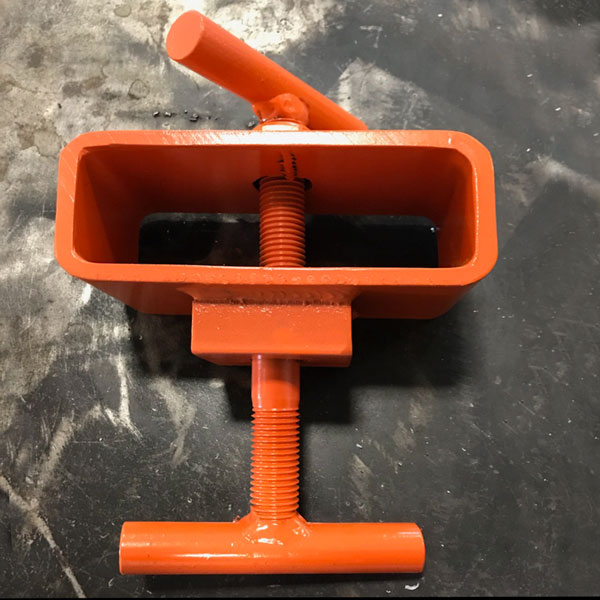
Ramp Length, Width, Rise, and Capacity
When it comes to the specifications of a mobile yard ramp, there are nearly unlimited options. The standard length of a mobile yard ramp ranges from 30 to 36 feet. The width of a mobile yard ramp refers to the usable with, excluding the additional width of the side curbs which are about three to four inches wide on each side. Standard mobile yard ramp widths are 70”, 84”, or 96”. Most yard ramps have an operating height range between 40 to 60 inches tall. Even at 60 inches (5 feet) high on a 30 ft long ramp, the slope of the ramp will be less than 10 degrees, which is within the recommended grade for electric, propane, and diesel forklifts. The final specification that you must consider when purchasing a mobile yard ramp is the capacity. The standard capacity varies but it is crucial to ensure that the yard ramp will support the weight of forklifts or other vehicles being used on the ramp. Even with standard specifications offered, HandiRamp can create a customized ramp to meet your business needs. As the world’s oldest custom ramp manufacturer, HandiRamp has constructed a wide array of custom mobile yard ramps, like ones with increased lengths or even yard ramps with a 100,000 lb capacity.
Additional Features for Mobile Yard Ramps
Guard Rails
As an extension to the standard features outlined above, mobile yard ramps can be further personalized with additional components to meet all of your business needs. As an added safety option, 42” high guardrails can be added to HandiRamp mobile yard ramps. The guardrails are typically utilized when employees will be frequently walking up and down the ramp.

Tow Bar
Similar to the standard ramp clamp, the tow bar is another forklift-based method for relocating the mobile yard ramp. The tow bar is a durable steel bar that attaches the base of the yard ramp to the back of a forklift. With the yard ramp wheels down, the ramp can be effortlessly towed from place to place by the forklift operator.
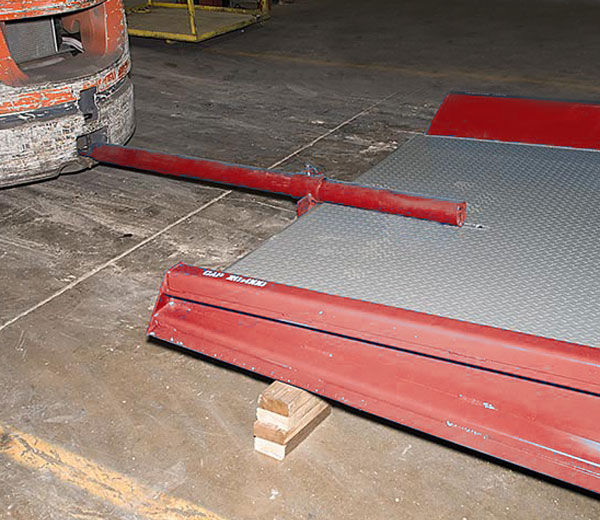
Trailer Stabilizing Jack
A trailer stabilizing jack is used to support a semi-trailer that is not attached to a tractor. The use of a stabilizing jack is very important when loading and unloading unattached semi-trailers, as it prevents tilting and upending.
Portable Loading Platform
A portable loading dock is a fast, economical way to expand a dock area and increase freight handling capabilities without needing to enlist new construction to build an entirely new loading dock. The portable loading platform can move with a business if they relocate. When placed in front of any dock or rail-car door, you will have access to three loading and unloading positions immediately, as the portable loading platform affords 90-degree turn ability for safe forklift maneuvering. The portable loading platform is especially recommended for use with mobile yard ramps that do not have a level-off, as it greatly extends the loading capabilities.
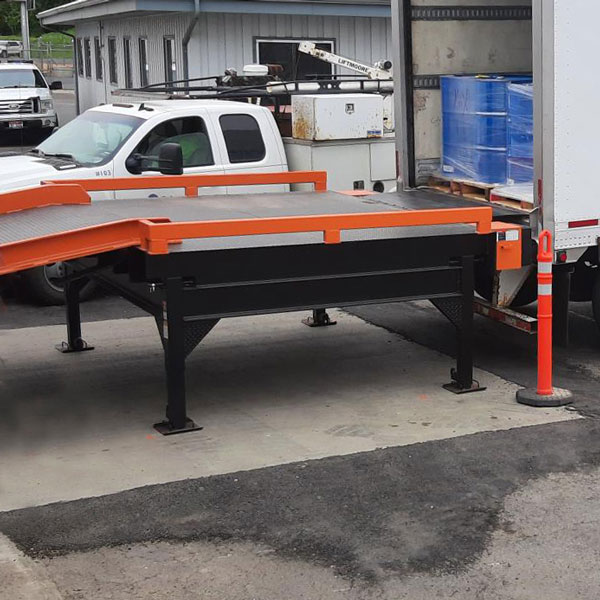
Purchasing New or Used and Renting a Mobile Yard Ramp
HandiRamp offers multiple options when it comes to acquiring a mobile yard ramp. You can buy a new yard ramp, which would allow you to completely customize the specifications if needed. If it makes more economic sense for your business to buy a used ramp, HandiRamp helps you find the used mobile yard ramp that will work best for your business needs with their extensive yard ramp inventory being the largest in the country. If your business anticipates only needing a yard ramp for a few weeks or months, HandiRamp offers mobile yard ramp rentals. There is also a rent-to-own program, which allows you to lease the mobile yard ramp instead of buying. It does not require a down payment and there is only a small deposit on the ramp. There is no collateral (other than the ramp itself) required. At HandiRamp works with a preferred leasing agent to offer you the best rates possible.

